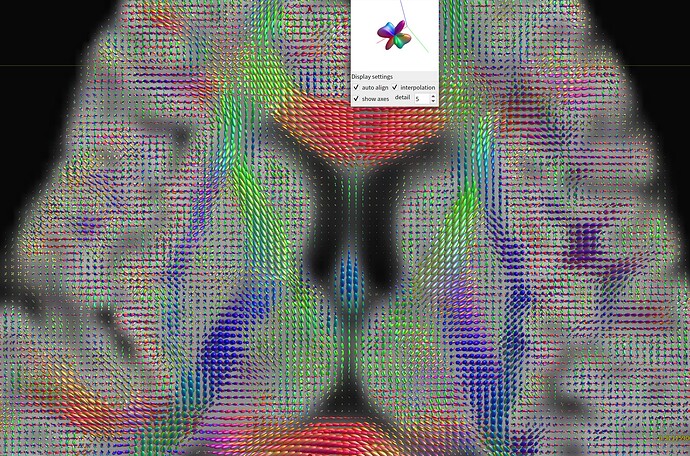Dear MRtrix3 community,
I’m implementing a Fixel-Based Analysis pipeline using single-shell DTI data (1 b=0, 55 b=1000). I have three questions regarding intermediate results:
Response functions validation
The response functions generated by dwi2response dhollander show expected patterns (WM anisotropic, GM/CSF isotropic). Example WM response:
3195.43787503105 0 0 0 0 0
1667.16418134566 -647.345954963735 141.155732127141 -26.0966573674176 1.46582648483342 0.0495213266841901
Is this format correct for single-shell data? shview shows the expected shapes.
Abnormal FOD distributions
After dwi2fod msmt_csd:
GM FODs show no FOD in cortical areas (screenshot attached)
WM FODs display fiber orientations in grey matter regions
Population template (group_wm_fod_template.mif) shows FOD lobes extending into GM
Is this expected behavior for b=1000 data? Could this be due to:
a) Limited GM/WM differentiation at low b-values?
b) Contamination in GM response estimation?
c) Fundamental limitations of MSMT-CSD with single-shell data?
Bias correction necessity
While dwibiascorrect ants is recommended, some suggest it may introduce artifacts. How should we evaluate:
a) When is it safe to omit this step?
b) Are there quantitative metrics to validate correction effectiveness?
c) Does correction affect fixel metrics (FD/FC/FDC) differently?
Data specifics:
Scanner: 3T GE MR Discovery
Resolution: 112mm
Preprocessing: Denoising, Gibbs unringing, Eddy correction, Bias correction and Global intensity normalisation
Hi Xiaodong,
I am not an expert, but in case you don’t have this information already, I’ve included some suggestions and details that may be of use.
I typically and successfully use QSIprep for the DWI preprocessing (including bias correction) (GitHub - PennLINC/qsiprep: Preprocessing of diffusion MRI, which also generates some QC measures (see also their article on this: An analysis-ready and quality controlled resource for pediatric brain white-matter research | Scientific Data)
Besides the Mrtrix documentation, a good resource, with scripts, for FBA is:
Of course, there is the paper:
https://www.sciencedirect.com/science/article/pii/S1053811921006923?via%3Dihub
In the case of masks: synthstrip: synthstrip.io. Also part of Freesurfer is a very versatile tool.
Importantly, note that for “Single” data, the Single-Shell 3-Tissue CSD (SS3T-CSD) and not MSMT-CSD: Single-Shell 3-Tissue CSD (SS3T-CSD) | MRtrix3Tissue, is the recommended algorithm (see discussion: Single shell vs. "Single tissue" - #5 by araikes)
Finally, while the documentation states a threshold (e.g., -fmls_peak_value) of 0.6, 0.8 might be a better choice in many cases (see: Dhollander (FBA pipeline - quality check for several steps). Anyway, as recommended in the guidelines, it is best to check this on your own data.
Cheers
William
Thank you so much for your patient guidance and insightful suggestions. Your detailed explanations and pipeline recommendations have been tremendously helpful to my study.
Through carefully reviewing the official MRtrix3 documentation (particularly the dwi2fod section), I’ve identified the key technical rationale: When using the msmt_csd algorithm with datasets containing only two distinct b-values (e.g., my current data with 1×b=0 and 55×b=1000 volumes), it’s only feasible to reliably estimate fiber orientation distributions (FODs) for white matter and CSF, whereas grey matter FOD estimation becomes mathematically underdetermined or invalid.
Best regards,
Xiaodong Chen
The Seventh Affiliated Hospital, Sun Yat-sen University
